Photographer Went To Siberia To Document The Illegal Mammoth Tusk Hunt, And This Is What He Saw
Tags: opinion
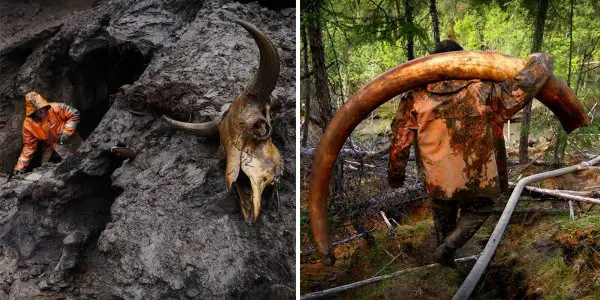
By Amanda Froelich Truth Theory
Little do people know that in the remote region of Siberia in Russia, a secret economic boom is taking place. Intrigued and hoping to learn more, Radio Free Europe photographer Amos Chapple visited the region in 2016 and entered the world of illegal mining for tusks and the remains of long-extinct wooly mammoths. Reportedly, Russian men participate in the illegal activity to sell the remains on the black market where they are guaranteed to receive a big payday. Chapple’s investigation reveals a compelling cycle of desperation, hard work and environmental consequence, as Bored Panda reports.
Woolly mammoths are thought to have lived in Siberia around 400,000 years ago. Arctic relatives to the modern elephant, woolly mammoths were submerged under permafrost and many remain encased in ice beneath the ground. To mine for the tusks, the men have to blast the thick, icy mud with water pumped from nearby rivers. Not only is the task arduous and dangerous, it is illegal. However, because mammoth tusks sells for about $35k when sold to Chinese buyers, it’s deemed a worthwhile risk by some — especially in some Russian cities, where the average monthly wage is under $500.
In the following photo series, the harsh reality of illegally mining mammoth tusks is revealed. The men constantly go to great lengths to acquire the remains and often battle hoards of mosquitos, live in fear of detection by the police, and exert great effort to brave rugged terrain. To remain motivated, they guzzle quarts of vodka and cheap beer and as a result, fights oftentimes break out.
The most horrific part of the ordeal, however, is the environmental toll resulting from the illegal industry. Run-off water from the frozen Earth they douse returns to rivers, where it pollutes serene streams and raises silt levels dramatically.
The photo series is accompanied by Chapple’s own commentary as written in his RFE article.
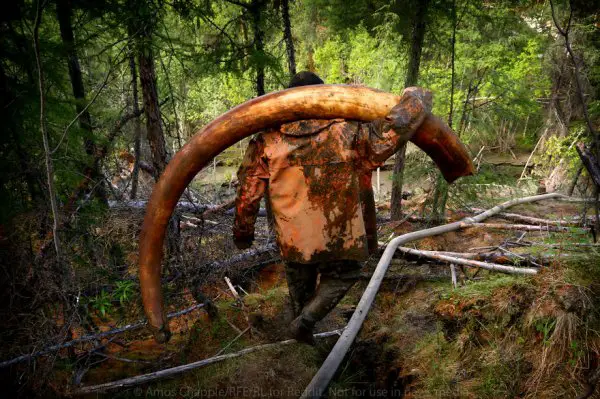
“With the sale of elephant tusks under close scrutiny, “ethical ivory” from the extinct woolly mammoth is now feeding much of China’s hunger for tusks. Every summer, bands of tusk hunters head into the Russian wilderness in the hopes of striking it rich. On condition I not reveal names or exact locations, I gained access to one site where teams of men are using illegal new methods in the hunt for what remains of Siberia’s lost giants”, wrote photographer Amos Chapple
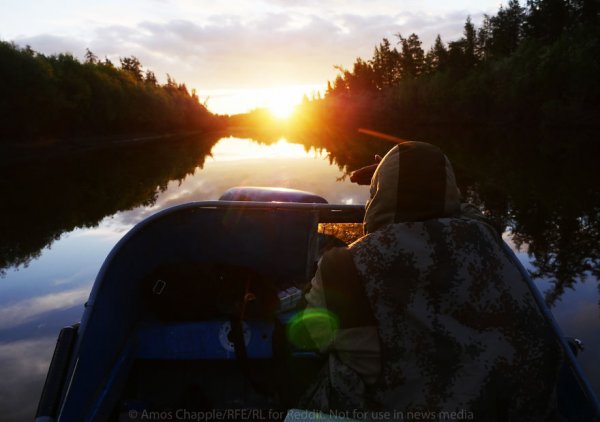
“Four hours by speedboat from the nearest village…” (Image credits: Amos Chapple)
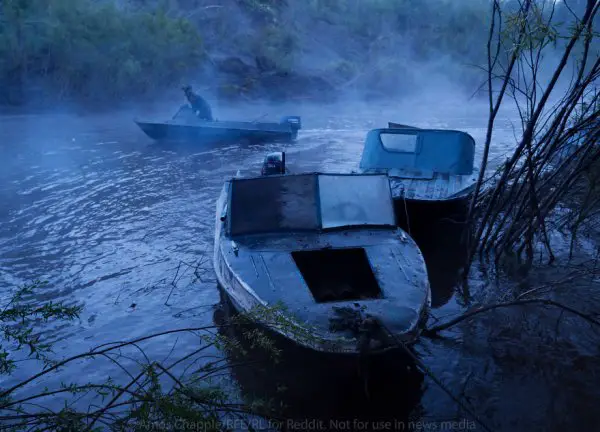
“…is a bend in the river riddled with mammoth remains.” (Image credits: Amos Chapple)
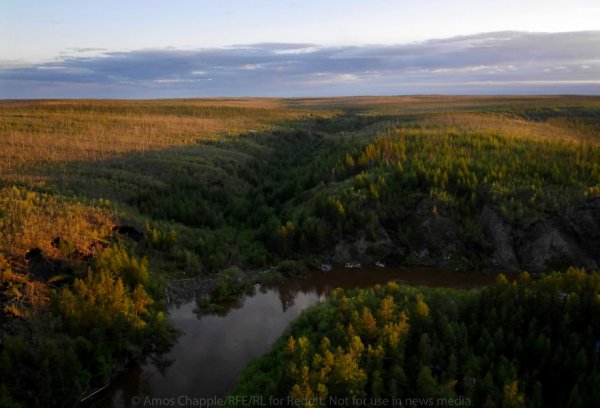
“A paleontologist I spoke to said this site was likely once a swamp or bog which drowned prehistoric beasts.” (Image credits: Amos Chapple)
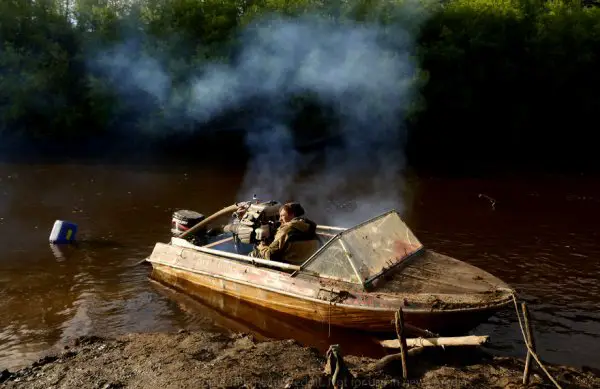
“The tuskers use water pumps designed for firefighting (Tohatsu are the preferred brand) to suck water out of the river..” (Image credits: Amos Chapple)
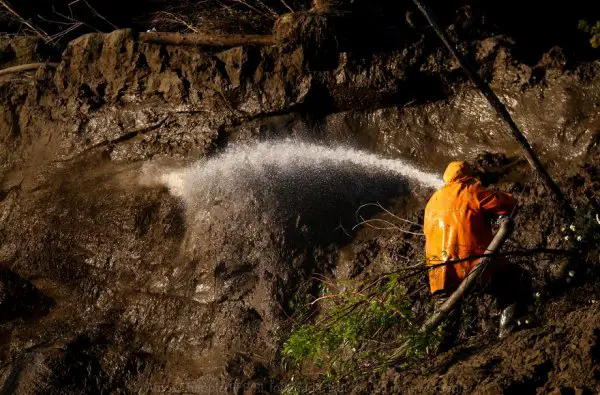
“…and blast it into the landscape.” (Image credits: Amos Chapple)
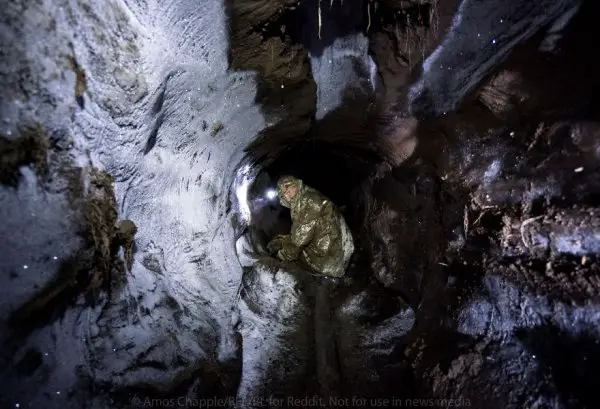
“Some tuskers carve long, deep tunnels (which are terrifying – the walls are as soft as garden soil).” (Image credits: Amos Chapple)
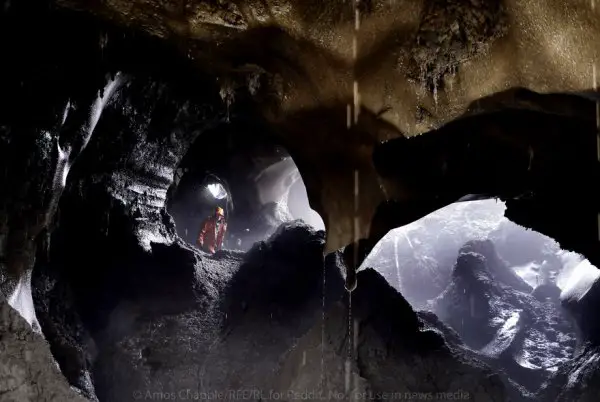
“Others use the cutting power of the hoses to carve huge underground caverns.” (Image credits: Amos Chapple)
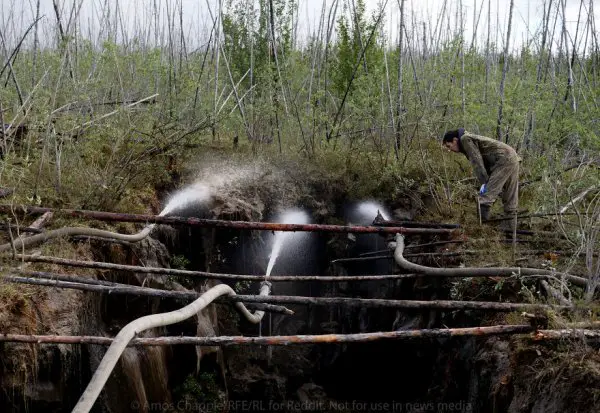
“And some gouge channels straight through the topsoil.” (Image credits: Amos Chapple)
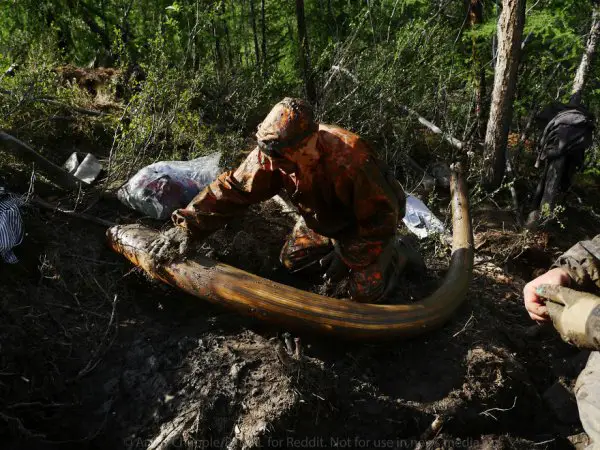
“In the hope of finding one of these – a perfectly preserved mammoth tusk, worth around $520 per kilogram.” (Image credits: Amos Chapple)
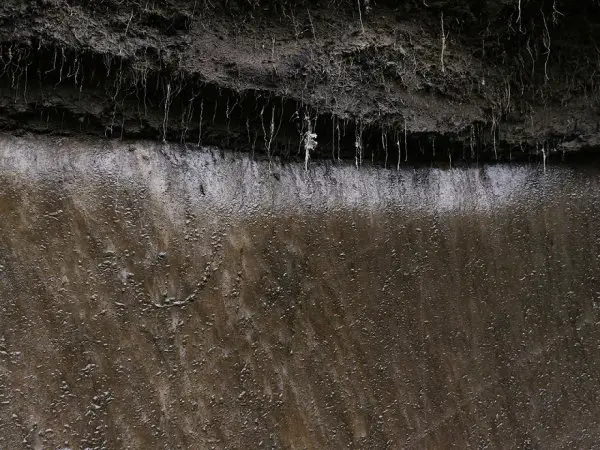
“A little background: Siberia’s Yakutia region sits on a foundation of permafrost – permanently frozen soil which lies a few feet below the surface.” (Image credits: Amos Chapple)
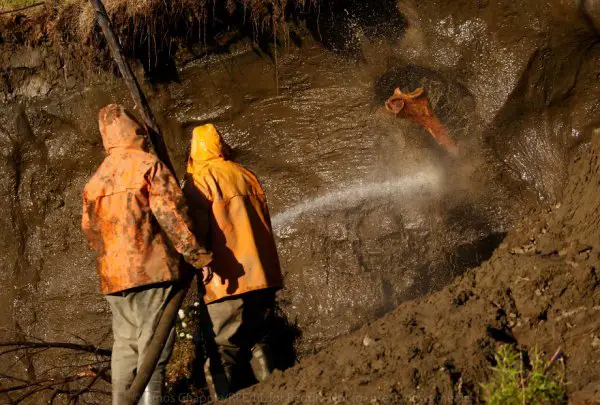
“In warm soil, bones would rot away within a decade. But tusks and bones like this mammoth hip can survive tens of thousands of years once locked into the permafrost, making Yakutia a mammoth mecca.” (Image credits: Amos Chapple)
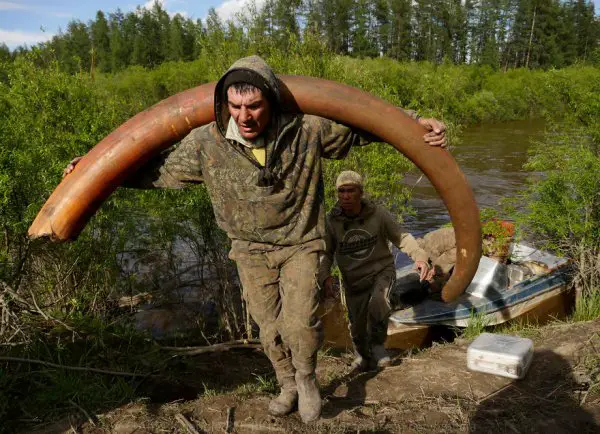
“This 65-kilogram tusk, photographed a few minutes after it was plucked from the permafrost, was sold for $34,000. The two men who found it unearthed three more in just over a week, including one weighing 72 kilograms.” (Image credits: Amos Chapple)
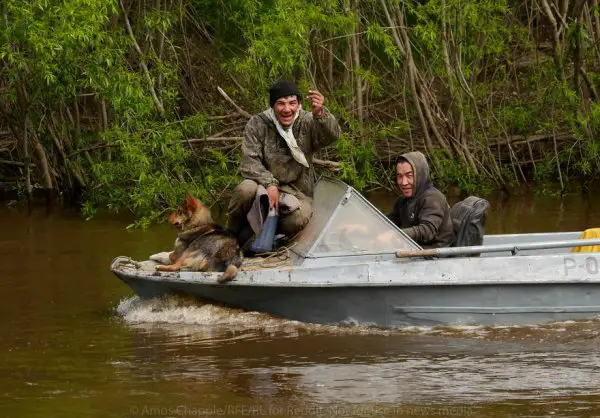
“The lucky tuskers flashing a “cash” gesture. They likely earned around $100,000 in eight days.” (Image credits: Amos Chapple)
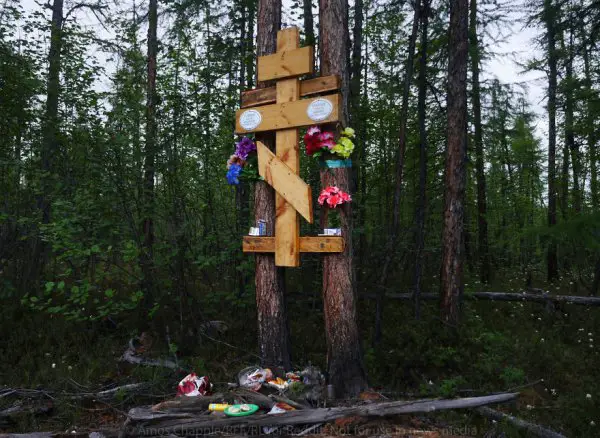
“That kind of money in a region where the average salary is around $500 a month, doesn’t always buy a happy ending. This memorial is for two young tuskers who made more than $100k, partied hard, then allegedly returned up the river drunk. They flipped their boat and drowned.” (Image credits: Amos Chapple)
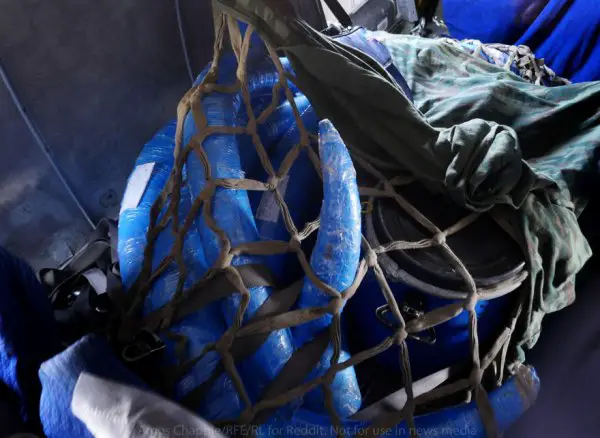
“In the tuskers’ hometown, elusive “agents” pay cash for fresh tusks. These plastic-wrapped tusks are on a flight to the city of Yakutsk, en route to China. This haul was covered with a tarpaulin, when I looked under it the air stewardess yelled at me, then marched down the aisle and slapped my camera out of my hand right after I took this photo.”(Image credits: Amos Chapple)
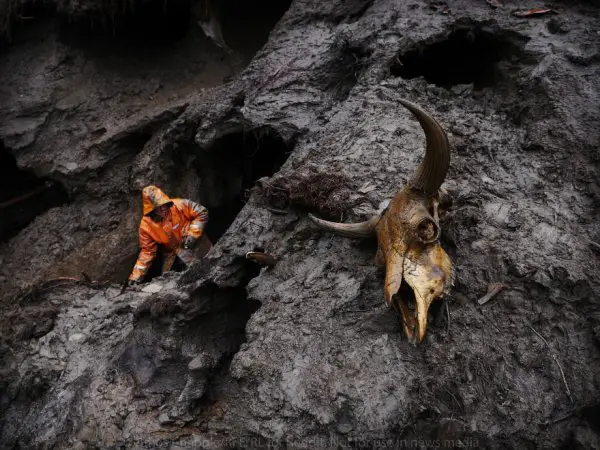
“But it’s not just mammoths that the men uncover. This skull belongs to a bison which which once roamed Siberia’s plains.” (Image credits: Amos Chapple)
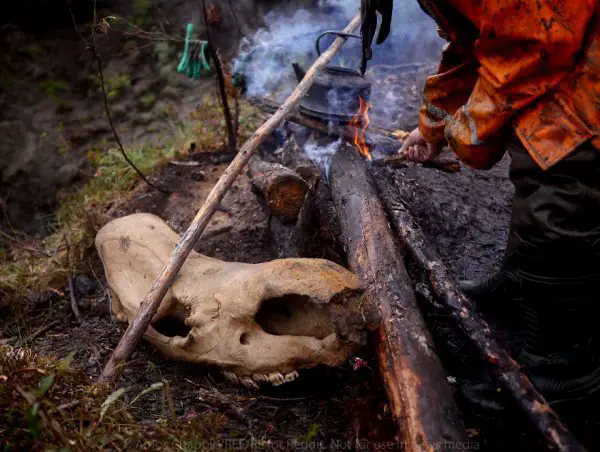
“And this skull, helping to prop up a kettle, is from a woolly rhinoceros.” (Image credits: Amos Chapple)
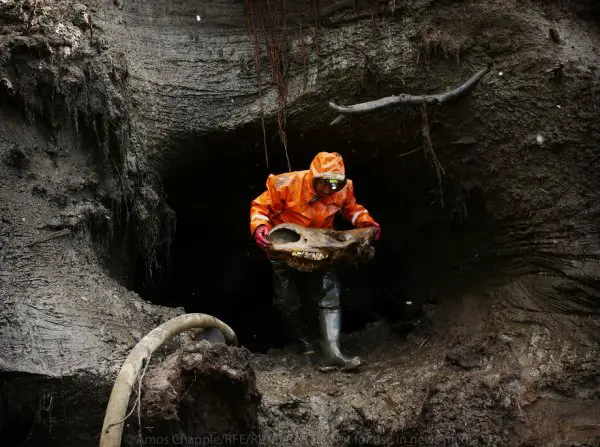
“Another rhino skull, feeling the sun on its snout for the first time in at least 11,000 years. The man who found it says that “when you find a skull, the horn is usually 15 or 20 meters away.” (Image credits: Amos Chapple)
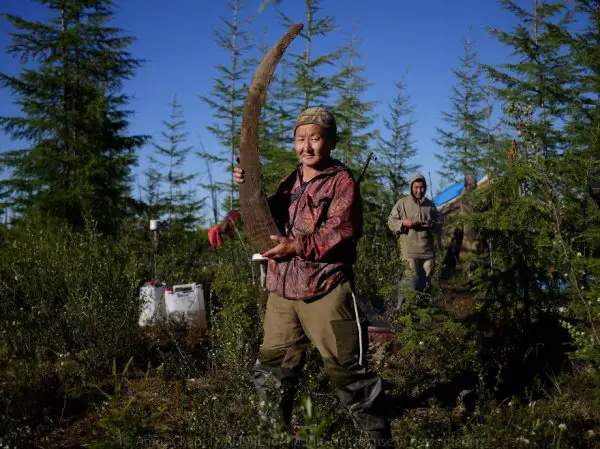
“This 2.4-kilogram rhino horn was sold to an agent for $14,000. It will probably end up in Vietnam, be ground into powder and marketed as medicine.” (Image credits: Amos Chapple)
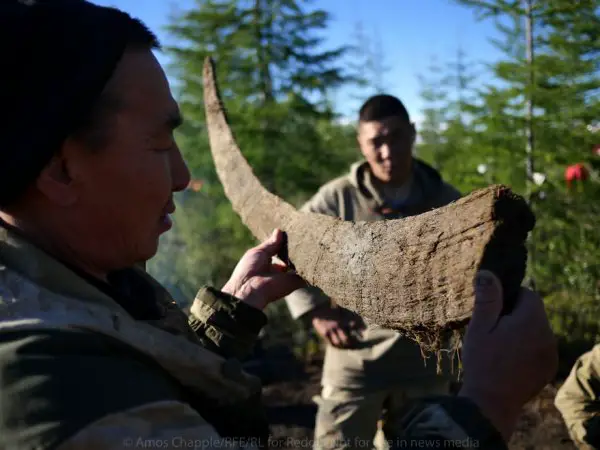
“The damp horn squelches like driftwood and smells like a dirty dog. The “cancer curing” rhino horn will be worth more than its weight in gold once it reaches Vietnam.” (Image credits: Amos Chapple)
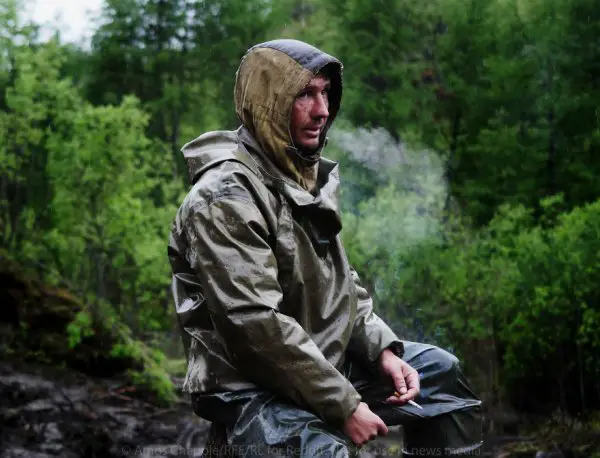
“The life: Most men here will spend the entire summer away from home and family.” (Image credits: Amos Chapple)

“This tusker penned letters to his wife that he passed on to other men headed back to the town, this is a letter from his wife – the first news he’d had from her in a week.” (Image credits: Amos Chapple)
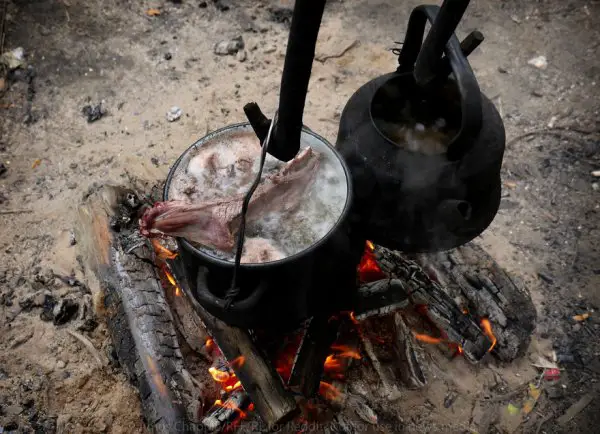
“This joint of reindeer is a rare treat. Most meals are canned beef and noodles. Two of the tuskers told me they eat dog “when we have to… The flavour is like bacon.” (Image credits: Amos Chapple)
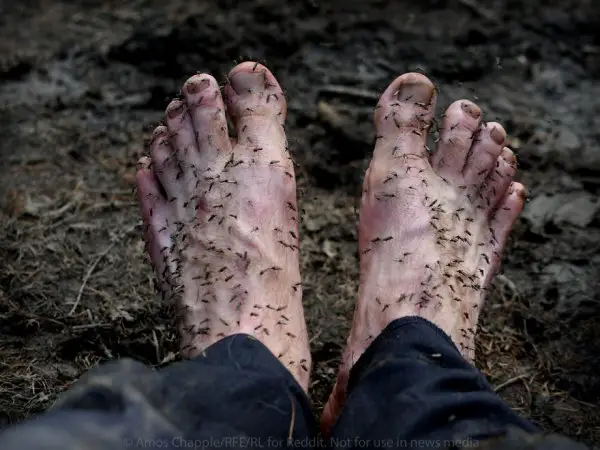
“Mosquitoes are a near constant plague. Only the coldest mornings offer an hour or two of relief.” (Image credits: Amos Chapple)
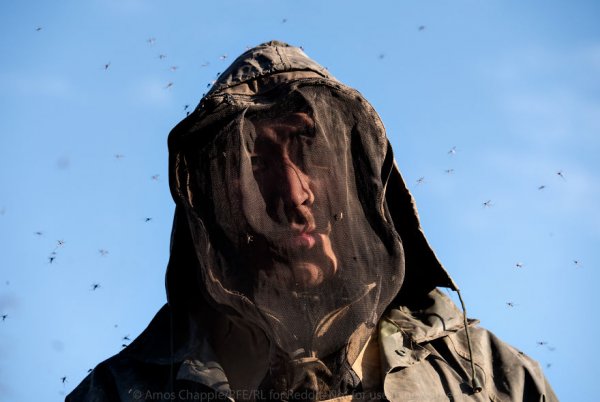
On warm days, some of the men wear clothes more suited to beekeeping than hard labour.” (Image credits: Amos Chapple)
THIS ARTICLE IS OFFERED UNDER CREATIVE COMMONS LICENSE. IT’S OKAY TO REPUBLISH IT ANYWHERE AS LONG AS ATTRIBUTION BIO IS INCLUDED AND ALL LINKS REMAIN INTACT.
I am Luke Miller, content manager at Truth Theory and creator of Potential For Change. I like to blend psychology and spirituality to help you create more happiness in your life.Grab a copy of my free 33 Page Illustrated eBook- Psychology Meets Spirituality- Secrets To A Supercharged Life You Control Here
Leave Comment: